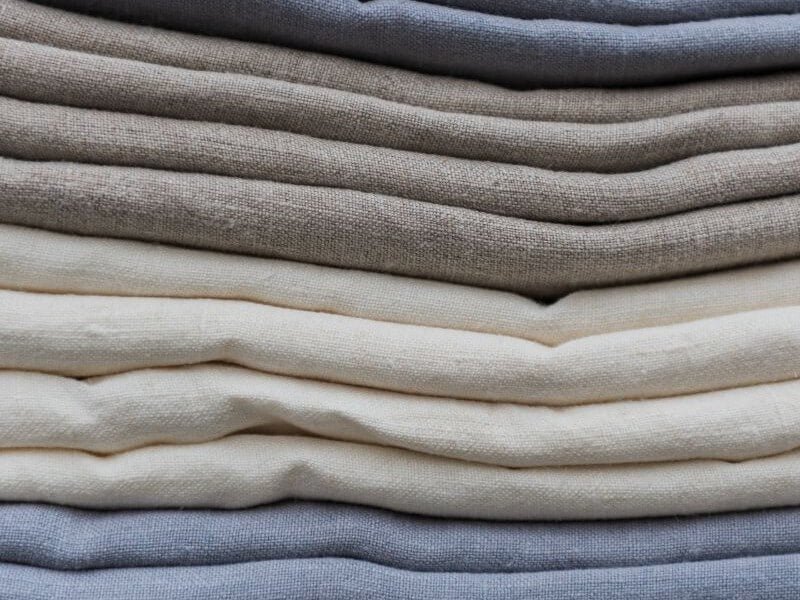Why Hemp Fabric Is Ideal for Indian Summers
Indian summers are known for their scorching heat, humidity, and challenging weather conditions that demand clothing which feels light, breathable, and comfortable all day long. While many fabrics claim to be summer-friendly, few truly deliver the cooling comfort and durability that hemp provides. Today, eco-conscious brands and consumers are turning to hemp fabric products because of their remarkable ability to keep the body cool, fresh, and comfortable even in peak summer months. With rising demand for sustainable fashion, hemp clothing products have emerged as one of the best choices for Indian weather. They are eco-friendly, skin-friendly, and naturally breathable—making them ideal for people who want comfort without compromising style. At Echo Earth, we specialize in offering high-quality hemp garments that redefine what sustainable fashion should feel like in India’s hot climate. What Makes Hemp the Perfect Summer Fabric? Hemp is naturally one of the most breathable and lightweight fabrics in the world. Its hollow fibers allow air to pass through easily, ensuring excellent ventilation during the hottest days. Unlike synthetic materials that trap heat, hemp keeps your skin cool and comfortable. This is why people increasingly buy hemp clothing products as a daily summer essential. Not only does hemp keep you cool, but it also absorbs moisture more efficiently than cotton. This moisture-wicking ability prevents sweat from sticking to your skin, making hemp the perfect fabric for outdoor activities, travel, or daily work under the sun. Naturally Breathable and Temperature-Regulating One of the strongest reasons hemp is ideal for summer is its natural breathability. Hemp fibers expand during heat and contract in cooler weather, regulating body temperature naturally. This makes hemp clothes perfect for India’s fluctuating summer conditions, where mornings may be humid and afternoons overwhelmingly hot. Echo Earth designs each product with this temperature-balancing property in mind, ensuring your clothing feels light and pleasant from sunrise to sunset. No other fabric manages temperature as efficiently as hemp, giving it a distinct advantage over cotton, linen, and synthetics. Superior Sweat Absorption and Quick Drying Sweating is unavoidable during Indian summers, but discomfort doesn’t have to be. Hemp fabric absorbs sweat quickly, dries faster, and prevents stickiness. This property makes hemp fabric products a must-have for daily wear in hot regions. Echo Earth hemp garments wick away moisture instantly, helping your skin breathe and stay fresh. Whether you’re commuting, working outdoors, or traveling long hours, hemp ensures you stay dry and comfortable, unlike polyester or nylon that trap sweat and increase heat. Naturally Anti-Bacterial and Odor-Resistant Summer heat often causes sweat-related odor and skin irritation. Hemp fabric is naturally anti-bacterial, preventing the growth of microbes that cause bad smells. This is a huge advantage for people with sensitive skin or highly active lifestyles. Echo Earth’s best hemp clothing in India collection ensures long-lasting freshness and odor-free comfort. Even after wearing it all day, hemp garments feel cleaner and fresher compared to other materials, making them perfect for summer wardrobes. Softens Over Time While Staying Durable Hemp is one of the strongest plant fibers in the world, making it extremely durable even with daily wear and multiple washes. What’s unique is that hemp becomes softer each time it is washed, providing long-term comfort without losing shape or strength. This makes hemp clothing products a smart investment for Indian consumers who want sustainable clothing that lasts years instead of months. Echo Earth designs garments that combine durability with softness, ensuring you never have to choose between comfort and strength. Eco-Friendly, Sustainable, and Better for the Planet India’s climate is changing, and consumers are becoming more conscious of their environmental impact. Hemp farming requires minimal water, no pesticides, and enriches the soil naturally, making it one of the most sustainable crops on the planet. This is why many eco-friendly shoppers prefer to buy hemp clothing products over conventional cotton. Echo Earth promotes sustainability by offering hemp fabric products that reduce carbon footprint while delivering premium comfort. Choosing hemp is a step toward a greener lifestyle, especially during summer when resource consumption is high. UV-Resistant Fabric for Outdoor Protection Indian summers bring intense sunlight, and prolonged exposure to UV rays can harm the skin. Hemp fabric naturally blocks UV radiation, offering additional protection during outdoor activities. This makes hemp clothes a safe and smart choice for summer hikes, beach trips, commutes, and everyday wear. Echo Earth uses pure hemp blends that retain UV-blocking properties, giving you an extra layer of safety without needing synthetic coatings or chemical treatments. Lightweight Yet Stylish: Perfect for Summer Fashion Despite being durable, hemp is surprisingly lightweight and flowy—perfect for creating stylish summer outfits. Its natural texture gives a sophisticated yet casual look, making it ideal for shirts, tops, dresses, joggers, and even ethnic wear. At Echo Earth, we design the best hemp clothing in India with modern silhouettes that combine comfort with minimalistic style. Whether you prefer contemporary fashion or traditional aesthetics, hemp offers unmatched versatility for summer wardrobes. Hypoallergenic and Gentle on Sensitive Skin Heat can worsen skin allergies and irritation. Hemp is hypoallergenic and free from harsh chemicals, making it ideal for people with sensitive or allergy-prone skin. Unlike synthetic fibers that can trap heat and cause rashes, hemp keeps your skin cool and irritation-free. Echo Earth’s hemp garments remain gentle, breathable, and suitable for all ages—making them a trusted choice for Indian families seeking safe summer clothing. Why Hemp Is Better Than Cotton for Indian Summers While cotton is a popular summer fabric, hemp outperforms it in multiple areas: Hemp absorbs more moisture Hemp dries faster Hemp is stronger and lasts longer Hemp is more eco-friendly Hemp regulates temperature better This makes hemp a far superior option for India’s long, humid summers. Echo Earth’s premium collection ensures you experience these benefits in every garment. Conclusion Hemp is not just a fabric—it’s a complete summer solution. Its breathability, durability, sustainability, and skin-friendly nature make it the best choice for hot Indian weather. As demand grows, hemp fabric products and hemp clothing products continue to rise in














